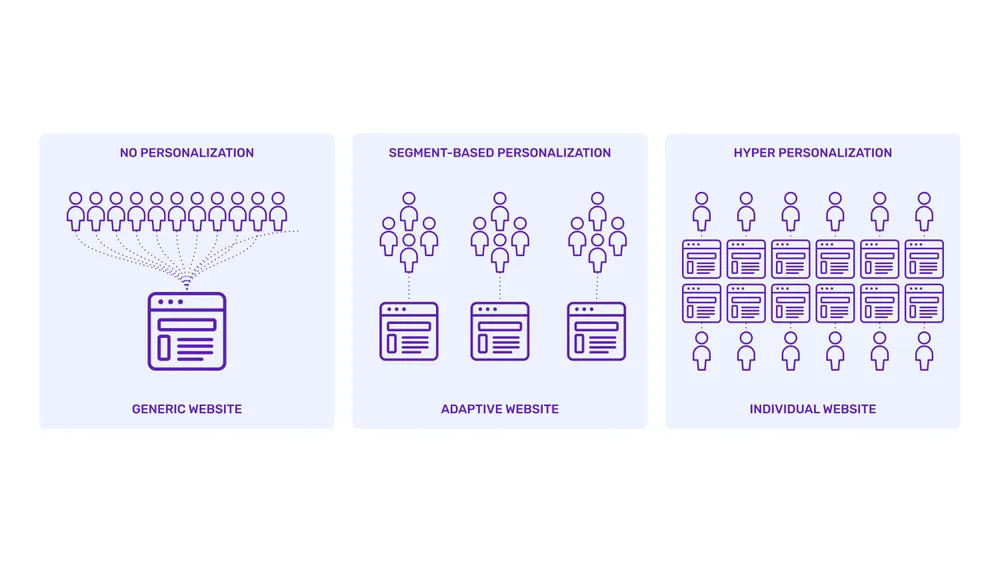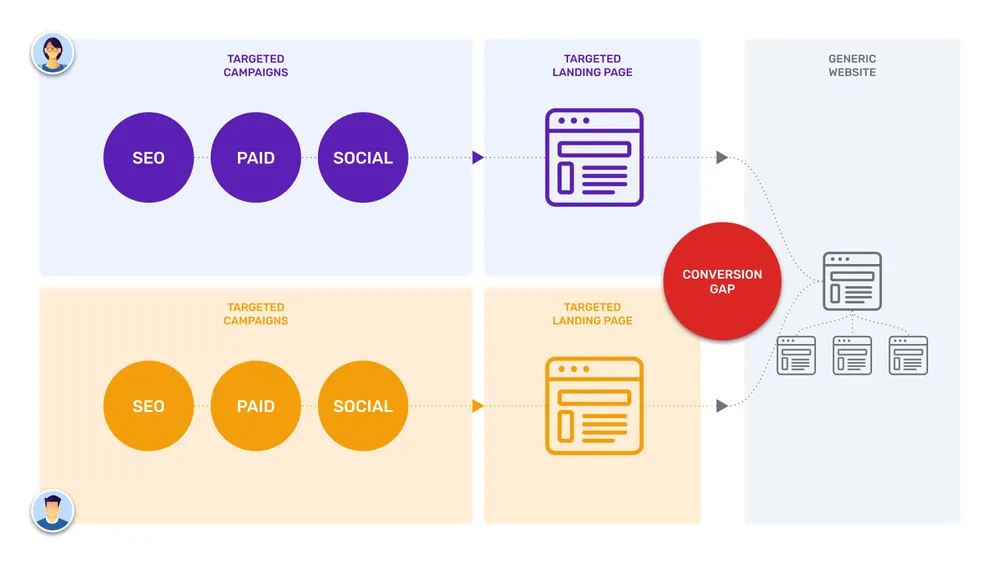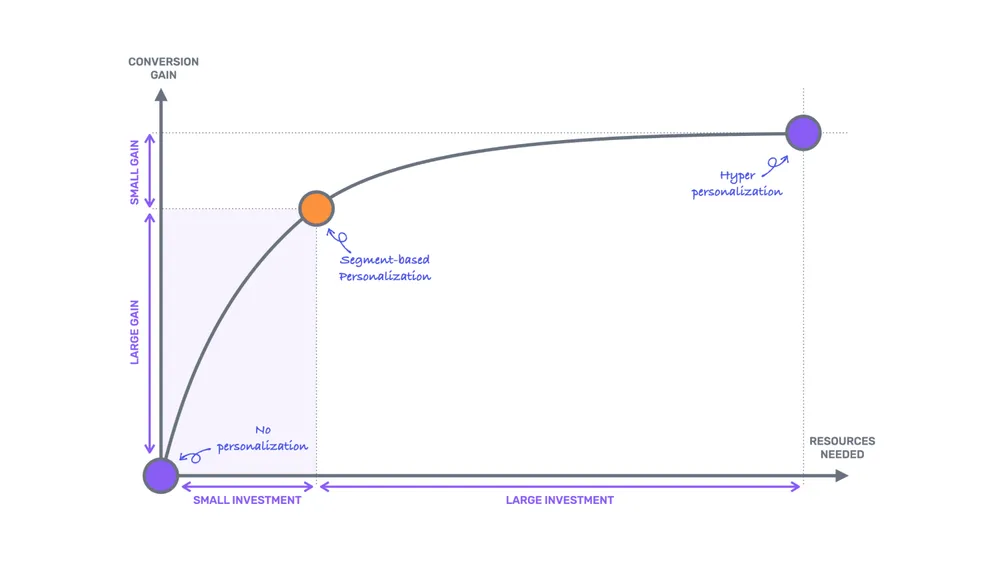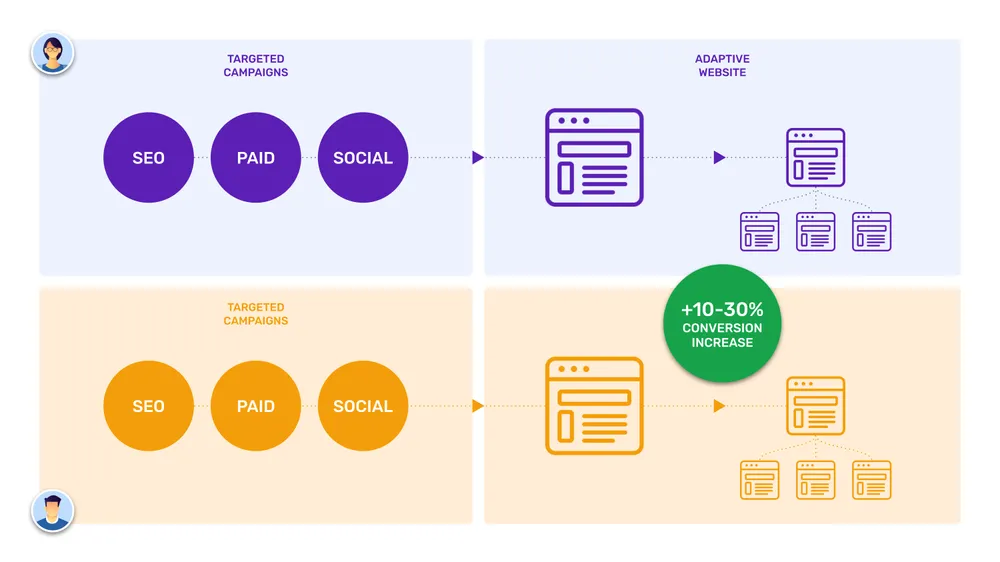
No Personalization: The Cold Shoulder
Imagine going to a restaurant where everyone is served the same dish, regardless of their dietary preferences or restrictions. There's no effort to accommodate individual tastes or needs. That's what a website with no personalization feels like. It treats every visitor as if they had identical preferences, offering a generic experience that may not meet their specific needs.
Many companies have generic websites without personalization because they believe it's complex and expensive to implement. However, they develop online campaigns for different target groups to reach them effectively. To retain expensive traffic, special landing pages are created for these campaigns.

Unfortunately, only a small portion of visitors convert directly on these landing pages, while the majority either leave, click through to the website, or return later. This results in a conversion gap, as the generic website is less effective in converting visitors. Personalization is the solution to bridge this gap and boost conversions.
Hyper Personalization: Tailoring Every Interaction
On the other end of the spectrum lies hyper personalization. This approach aims to deliver highly customized experiences to individual users based on their past interactions, preferences, and even real-time data. While hyper personalization can create a highly engaging user experience, it requires advanced data collection, analysis, and implementation capabilities.
While hyper-personalization sounds ideal, it might not be appropriate for your situation. Hyper-personalization requires a lot of data and content to work well, which is fine for platforms like TikTok, YouTube, and Spotify, as they have millions of users and millions of content items. But most companies lack the resources for this approach.


